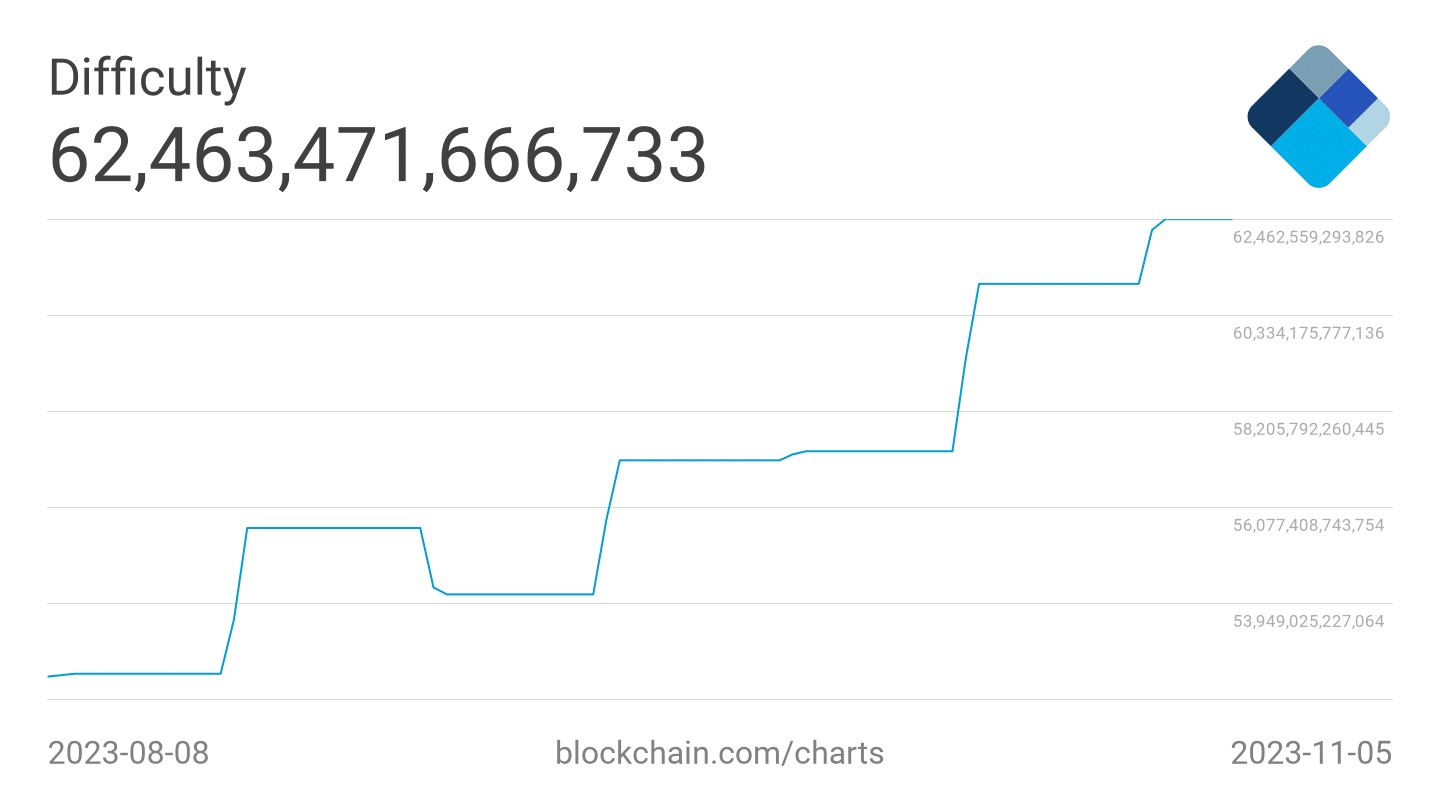- Bitcoin’s hashrate reached new heights.
- Miner revenue remained stable as its Open interest grew.
Bitcoin [BTC] prices stagnated after jumping past the $34,000 barrier. Even though the state of the holders was largely positive, the miner cohort told a different story.
Hashrate continues to rise
The 5th of November marked a historic moment for Bitcoin, as its hash rate reached a record 521 exahashes per second (EH/s). This milestone came during the middle of a difficulty epoch, and it’s anticipated that the difficulty adjustment will increase by over 5.5%.
In simpler terms, Bitcoin’s processing power hit an all-time high, indicating strong network security.
A high hash rate in Bitcoin has several positive effects. First, it enhances the security of the network, making it harder for malicious actors to attack or manipulate the blockchain. This boosts trust in the cryptocurrency.
Second, a strong hash rate indicates a vibrant and competitive mining community. This leads to efficient and timely processing of transactions, ensuring smooth operation.
However, there are negative aspects as well. With a high hash rate, mining becomes more competitive and resource-intensive. Smaller miners may find it challenging to compete, leading to centralization.
Rising difficulty
Additionally, along with Bitcoin’s hash rate, the overall network difficulty of Bitcoin mining also rose. High mining difficulty in Bitcoin has both positive and negative impacts.
On the positive side, it ensures the security of the network by making it very hard for anyone to maliciously tamper with the blockchain. This is crucial for maintaining trust in the system.

Go to Source to See Full Article
Author: Himalay Patel






